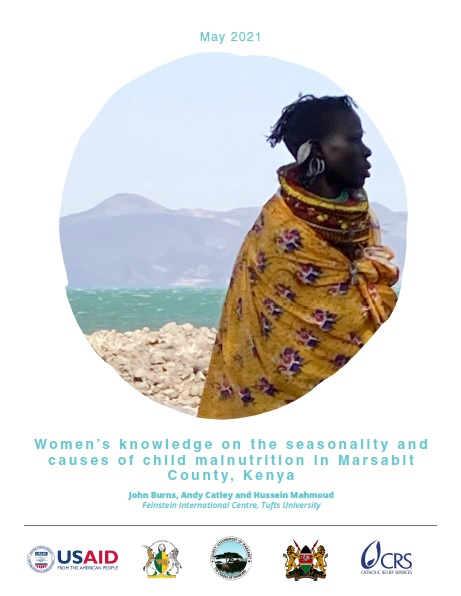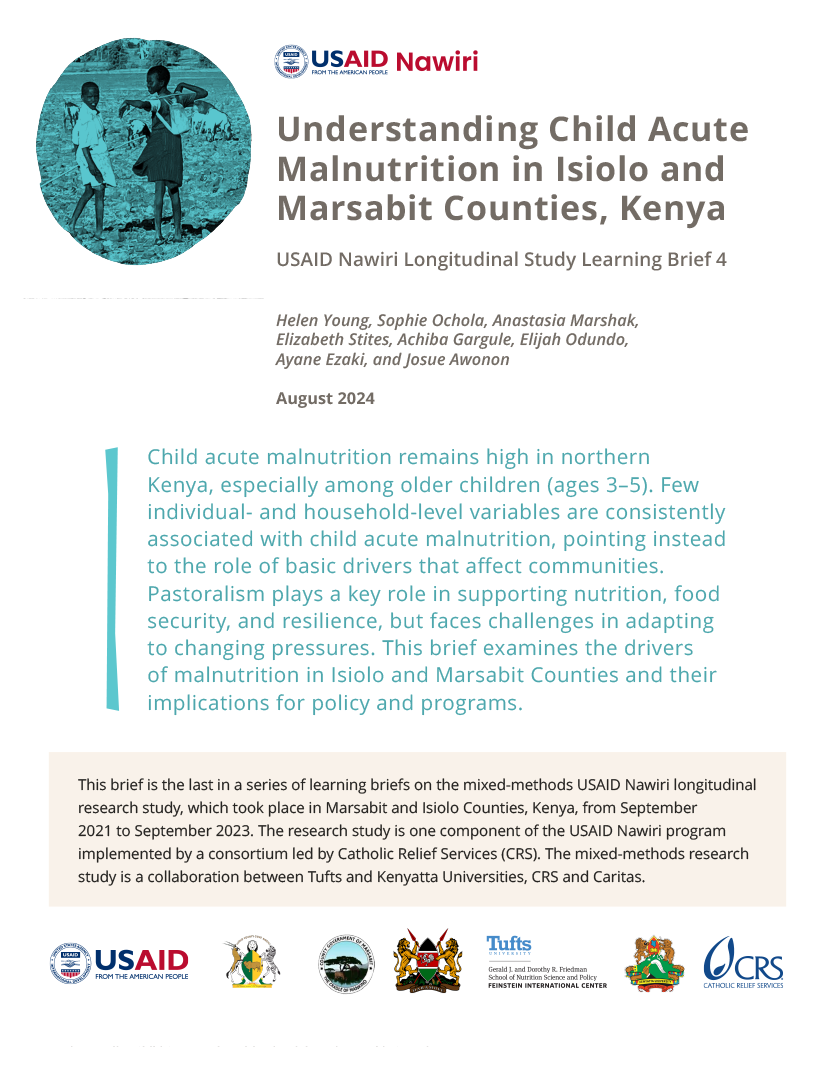This report presents the results of a participatory analysis of the causes and seasonality of malnutrition in children and mothers in North Horr and Loiyangalani wards in Marsabit county, Kenya.
Although North Horr and Loiyangalani areas differ in terms of livelihoods, culture, and ethnicity, similar findings emerged from both locations.
Overall, women positioned the problem of malnutrition within a context of changing and gendered livelihoods, marked seasonality of livelihood systems, and physical remoteness with limited infrastructure or public services. These factors combine in ways which place women and children at a very high risk of acute malnutrition. Specifically, women described the following main causes of malnutrition for children and mothers:
- Insufficient milk and meat from livestock: Milk yields decline in the dry season and the majority of livestock move to distant grazing areas, so women and children do not have access to the milk or meat. Additionally, livestock ownership has declined due to drought, conflict, and other factors, reducing the overall availability of milk and meat. In Loiyangalani, fish are a prime source of protein, but are more difficult to catch during the dry season, so cannot compensate for the lack of livestock products at this time of year.
- Lack of income: In this remote area with poor infrastructure, the cost of basic foods is considerably higher than more connected parts of the country. There are also very few meaningful income earning opportunities, particularly for women, many of whom depend on selling firewood and charcoal during the dry season in order to make ends meet. There are many expenses to cover with limited income, including food, schooling, and health care. Women therefore have to make difficult decisions on how best to spend the little money they have. This often means that women are not able to purchase nutritious foods, specifically high-quality proteins and fats, during the dry season.
- Human disease: Diarrhea, which increases in the dry season, and to some extent other diseases were identified as one of the most important factors contributing to child and maternal malnutrition. Participants associated diarrhea with poor water quality, poor child hygiene when the children are left without proper care for long periods of time, and the consumption of certain types of ‘hunger” foods.
- Gender issues: Participants identified a whole set of gender issues that directly or indirectly contribute to maternal and child malnutrition. These included issues around control over livestock assets and income, and decisions around household food and medical expenditures. Women spend a considerable amount of time on economic and livelihoods activities which yield minimal returns in terms of income or nutrition. More specifically women’s workload can lead to the neglect of children, particularly during the dry season, which in turn is linked to poor child hygiene. There are also a number of social norms and cultural taboos around diet, exclusive breastfeeding, and child spacing that are potentially harmful to both mothers and children. The women also associated domestic violence and marital issues with malnutrition. All these issues create a psychological burden on women who are trying to support their families often with little or no support from their husbands. The women expressed this burden in terms of stress or anxiety which they described as an illness whereby the mother cannot take care of herself or her children, and this leads to malnutrition.
The study involved a joint analysis with women using two participatory epidemiology (PE) methods: a monthly calendar and a causal diagram. Based on this analysis, participants were asked to identify their intervention preferences to address both child and maternal malnutrition. Learn more about the methods here.
This study is part of the Nawiri (Nutrition in the ASALs within Integrated Resilient Institution) program. Nawiri aims to sustainably reduce persistent acute malnutrition by designing and implementing an approach for supporting, strengthening, and protecting systems and institutions. The project is funded by USAID/Bureau of Humanitarian Assistance (BHA) and the consortium implementing the program in Isiolo and Marsabit counties in northern Kenya is led by Catholic Relief Services (CRS).







